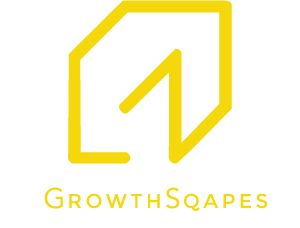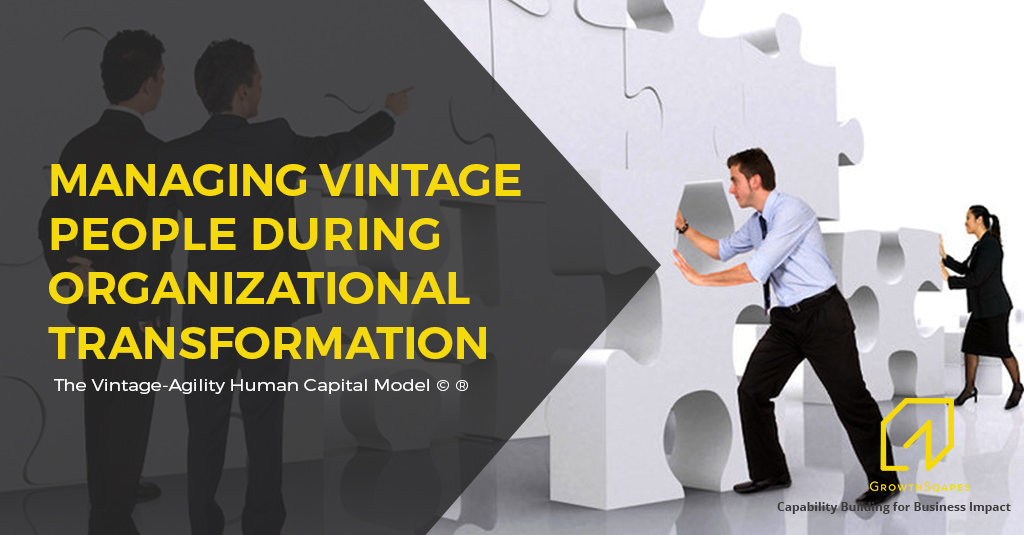The Existential Question
Particularly those organizations which have existed for many years, a time comes when it faces an existential question that must be answered. “The conventional (read traditional) model of our operations, should we continue with that? Will it be potent enough to help us enter the new age economy?” Is what the board room deeply contemplates. For the courageous ones, this often leads to a deterministic enterprise-wide planned changed intervention – the organizational transformation.
The Role OD plays
Whereas there are agile transformation experts who lay down the cognitive process of transformation, it is the Organization Development (OD) experts who hold the hands of the organization to enter a new world of work in terms of value creation, innovation, process integration, and collaboration. The organization faces fundamental dilemmas akin to balancing Hobson’s choice – what to do with vintage employees? Vintage is characteristic of high quality.
Nonetheless, vintage is also characteristic of not being in tune with modern times though being a solid citizen. In the context of organizations, the ‘high quality’ of people is time relevant. When the organization wants to shift from a traditional model of operation to a more contemporary model to adapt to the shifting waves of the new age economy, how it deals with the vintage employees is a direct reflection of any gap existing between its espoused values and enacted values about its workforce.
The Vintage-Agility Human Capital Model©®
Our Vintage-Agility Human Capital Model©® is a logical yet sensitive application that offers to facilitate astrategic plan and decision-making in this area. When viewed through the lens of ‘fit for future’, the human capital can be seen through the two axes of Vintage and Agility. The resultant four zones clearly offer the strategic necessities that are merited.
When Applied as an Intervention
Our experience of running this intervention for an European beer major has resulted in painless management of “people matters” during an organizational transformation endeavor – a rather sensitive issue otherwise. This brewery organization was traditionally a family business for generations which is traveling the cycles of times since 1870, high on passion and innovation and wanted to shift gears to match the speed and character of the new-age business dynamics.
People who were high on vintage, low on agility, and were in the zone of obsolescence were “to be dealt with”. The brewery family first wanted to push these people to the zone of capacitive potentiality to explore areas on which it was possible for them “to be developed”. They were imparted new technology, a new work attitude, and new skills development training to reduce the gap between what they were earlier good at and what their new roles demanded to become performers today.
Being a historical family business, they had a humanistic approach and believed in the Y-theory way of managing their human capital base that the theory-X way. Putting anyone in the zone of obsolescence was the ultimate step that was used when it was thoroughly falsified that these people can be developed. It was validated in many ways before being conclusive that they have reached such high levels of obsolescence attitudinally as well as by skills, that they cannot be developed.
The Effect
The efforts made with these people were recognized by the people themselves. They, therefore in many cases volunteered a good-humored separation. The brewery family management ‘took care’ of them for lengthy periods of the rest of their lives socially, emotionally, and economically. The identity of belonging to the organization was reinforced in many different even after the separation. One family director shared the spirit rightly – “the marriage is called off, but the human relationship remains”. sense of identity that the people derived by ‘working for the brand’ was changed but never robbed off.
The Lessons Learnt
The above success story has many lessons to learn.
- Potential agitations in organizational transformational endeavors are indeed made smooth and harmonious by effective OD intervention.
- The Change Engine moves in a pair of tracks – the mechanical process reengineering, and the humanistic people process management.
- OD interventions prevent derailment of the change engine.
- Not all organizations need to be financially as generous as the brewery company, but emotional generosity and inclusion are possible without expending a penny.
- Employment ceases, ambassadorship continues.
- Organizational Identity and identification are significant constructs that are often ignored in transformation exercises with huge long-term ramifications.
- Holistic approach to organizational transformation through the diagnosis of conscious as well as unconscious processes yields better results and business impact than the Reductionist quick-fix approach.
(Disclaimer: Names of client system are withheld under a non-disclosure agreement.)
GrowthSqapes does extensive work in the area of OD. Feel free to reach out to us.
This blog has been written by Pete Harpum, Partner at GrowthSqapes.

